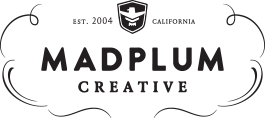2017 Digital Advertising Trends: Be Prepared With This 10 Point Checklist
Most traditional marketing techniques have become less effective in today’s world because of the widespread use of information technology. Prospective customers no longer rely on magazine, newspaper, or television ads to gain information about new products and services. They search online and have access to comprehensive reviews, discounts, sales, informative content, etc.
However, amid the digital revolution, traditional marketing methods haven’t become entirely obsolete; instead, they’ve evolved to complement modern strategies. One such avenue is through the utilization of consumer mailing lists. These curated lists offer businesses the opportunity to directly target individuals who have expressed interest or shown purchasing behavior related to their products or services. In an era where consumers are inundated with online information, a well-crafted direct mail piece can stand out, offering a tangible and tactile experience that fosters brand recall and loyalty.

Most businesses struggle to gain attention on highly competitive platforms and need to implement the most effective digital marketing strategies. Here’s a 10-point checklist that can help you:
- Mobile is King
Desktop advertising has been on a decline for a few years now, but it’s expected to go down even further in 2017. Most people will shop, research, and even purchase items online. While this doesn’t mean you should disinvest completely from desktop advertising, you should direct more money and effort towards mobile digital marketing.
You can focus on apps, social media platforms, mobile internet, etc. Both Google and Bing have excellent mobile digital marketing systems in place. Paid ads take up valuable real estate on the smaller mobile screen so your prospects are more likely to focus on them than organic results that are listed below.
- Facebook and Google are Advertising Havens
Google and Facebook are still some of the most lucrative platforms for digital advertising. While many marketers believe that Facebook has become less popular, especially with the younger audience, statistics indicate otherwise. There are still a sizable number of millennial users on this social media platform. Both Facebook and Google provide precise targeting options, easy-to-manage platforms, and high levels of visibility. If you plan your marketing strategy well, you will stay within the budget and get great ROI from these platforms.
- Outstream Video is Less Annoying
A large number of internet users install ad blockers and similar tools because ads can be very disruptive. They bog down the page upload time, intrude on the content they want to read or watch, and can demand time they simply do not have. As a business owner, you should consider making ads more palatable to your target audience and Outstream is a good way to do that.
This platform allows you to show your target audience video ads outside of traditional video players. These ads can appear while the user is scrolling down a page in the text line. It can also appear at the corner of the page, where they don’t distract the user but are still visible. This is one of the latest and most effective digital marketing trends.
- Marketing Automation will Help
Marketing automation is the industry buzzword for a good reason. This system allows you to gain and retain leads, and keeps customers engaged. You can use automation in a number of modern marketing and advertising strategies, including analytics, landing pages, and campaign management. They’re all important aspects of digital marketing and will ensure your campaigns are on track and provide good ROI. Marketing automation can also be used for other forms of digital marketing like social media, email, and content.
- Remarketing is Essential
Business owners and marketers invest a lot of effort and money into acquiring new leads. Many of these leads convert and provide good revenue as well. However, it’s not easy to keep them interested and connected with the brand in the long-term. Paid remarketing can help you remind your previous customers of your presence and bring them back to the brand.
Remarketing targets people who have already visited your website or purchased your products. These ads usually showcase products in the same or related category. For example, if a customer has bought a pair of shoes, they might want to purchase a bag as well. Remarketing or retargeting ads is one of the most effective marketer trends for 2017.
- Bing is Useful and Influential as Well
People tend to focus on Google and forget that Bing also commands a sizable market and targets a different demographic. Why place all of your eggs in one basket when you can spread your paid marketing campaigns across different platforms? Google is highly competitive so you might get better visibility on Bing at a lower cost. Many brands get good ROI from this platform so it’s worth investing in Bing in 2017.
- Explore Popular Social Media Platforms
Social media platforms provide advertising opportunities as well, you just need to explore and research the different options available to you before you invest in them. You can start paid marketing campaigns on Twitter, SnapChat, Instagram, and LinkedIn as well. LinkedIn is excellent for B2B businesses while SnapChat and Instagram are good options for companies that which to target a younger audience.
In fact, SnapChat and Instagram videos have a high rate of success because they’re short, easy to create, don’t require much investment, and can engage a large number of audiences. You can create both organic and paid marketing campaigns on these social media platforms for maximum effectiveness.
- Use Email Addresses to Create Custom Audiences
If you’ve been a part of your industry for a while, you probably have a list of email addresses in your database. You can use these email addresses to create custom audiences in both Facebook and Google platforms. This will allow you to send ads to prospects that are most likely to convert. You will spend less money and effort and gain more leads and revenue. This can also be a part of your retargeting campaign and help you bring previously converted customers back to your brand.
- Keep Up to Date with Trends in Internet Advertising
12 months is a long time in the world of digital marketing so strategies that are trending now aren’t likely to trend a few months down the line. Business owners and marketers need to keep their ear to the ground and be aware of all the trends. They should also keep track of algorithm changes and alterations in digital advertising platforms like AdWords. If you don’t keep an eye on the industry trends, you might miss big changes and that might damage your campaigns completely. If you don’t have the time to keep an eye on the marketing trends, consult with a professional regularly to ensure you’re up-to-date.
- Conduct an Audit Regularly
You don’t just need to keep an eye on the digital marketing industry, but also on your campaigns. Analytics will never stop trending because it helps marketers and business owners keep track of their campaigns. Without analytics tools, you can’t determine if your ad campaigns provide sufficient returns to justify the investment. You can compare your expenses against click-through rates, conversions, revenue, and other such variables to determine if your ad campaigns need any improvement. You can also keep track of landing pages and their bounce rates. This is one of the most important aspects of digital advertising because you can use the information that analytics provides, to optimize your campaign.
These digital trends will ensure you stay ahead in the game and help you gain attention from your target audiences. It’s vital to keep up with the latest trends and techniques because the digital marketing industry is very mobile. If you’re not vigilant, your campaign’s performance can slip at any time. A professional digital marketer can help prevent that.
Posted In: Blog, Digital Marketing, Experience Marketing



